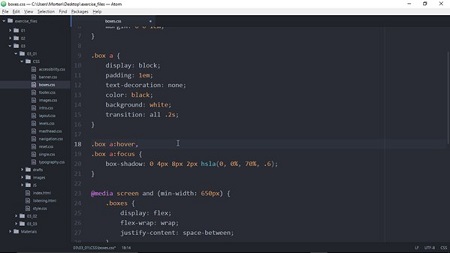Responsive Web Design in the Browser
English | 2016 | MP4 | AVC 1280×720 | AAC 48KHz 2ch | 1h 52m | 643 MB
eLearning | Skill level: Intermediate | by Morten Rand-Hendriksen
Download Part 1 Download Part 1
Download Part 2 Download Part 2
With all the web design software available, why would you design in the browser? We are living in a brave new world of responsive design. Websites can be read on mobile devices, tablets, desktops, and even on the smart watches on our wrists. Most static web design tools don’t account for that. The browser is an endless, flexible canvas. It’s a natural place to code, and its dynamic design surface and instant feedback allows for more responsive web designs.
In this course, Morten Rand-Hendriksen explains his approach to designing in the browser, which starts well before he even starts coding. He shows how to define the layout on paper and create a “language” for the site, and then builds a baseline document with HTML5. Then he uses CSS to guide the look of the site and the layout, using media queries and Flexbox to add responsive behaviors. In chapter 3, Morten improves the site’s interactivity using CSS transitions and transforms. Finally, he reveals how to use these techniques to build WordPress themes in the browser.
Each step involves design strategies, best practices, and actual code examples that will turn the web browser into your new favorite design tool.
Topics include:
- Use the browser as a design canvas
- Draft layouts with pen and paper
- Modularizing the design
- Create a baseline document with HTML5
- Create responsive layouts with Flexbox
- Applying CSS transitions and transforms
- Building WordPress themes in the browser
Table of Contents
Introduction
Welcome
What to know before you start this course
1. Design Preparation
Use the browser as a design canvas
Establish a design language for your site
Draft layouts with pen and paper
Map out containers by drawing boxes
Modularize the design
✓ Challenge: Create a container map and modularize the design
✓ Solution: Create a container map and modularize the design
2. Visual Design in the Browser
Tools and setup
Start with a core setup
Create a baseline document with HTML5
Sidebar: A simple RWD principle
Apply fonts and responsive typography
Work on one module at a time
A practical approach to responsive web design
Use modern technologies to simplify the design process
Create responsive layouts with Flexbox
Color tools in the browser
Color experimentation and the value of HSLA
✓ Challenge: Design the article page in the browser
✓ Solution: Design the article page in the browser
3. Interaction Design in the Browser
Interaction design through CSS
CSS transforms
Experimentation through image filters
4. Designing WordPress Themes in the Browser
Design responsive WordPress themes in the browser




















